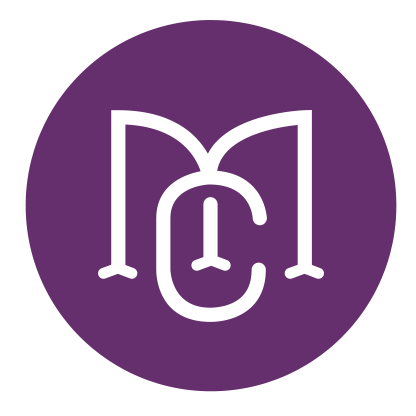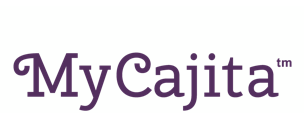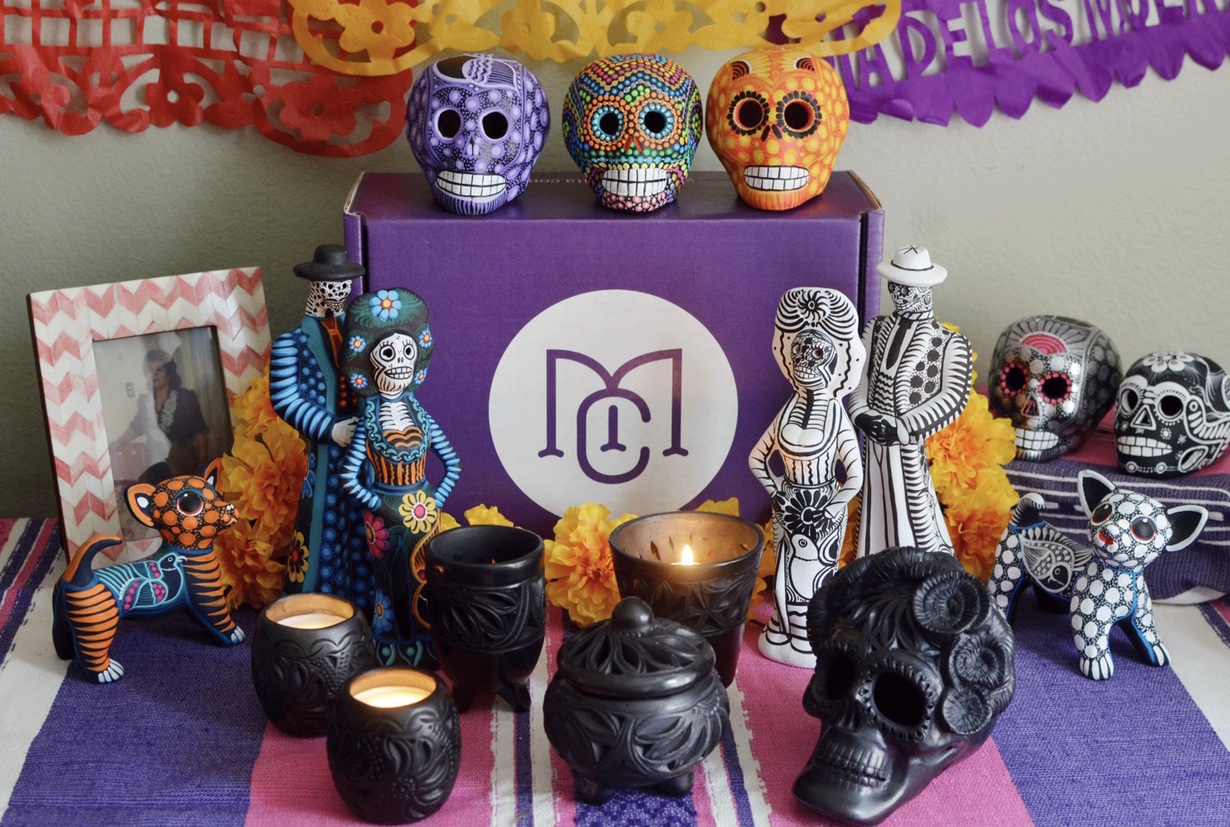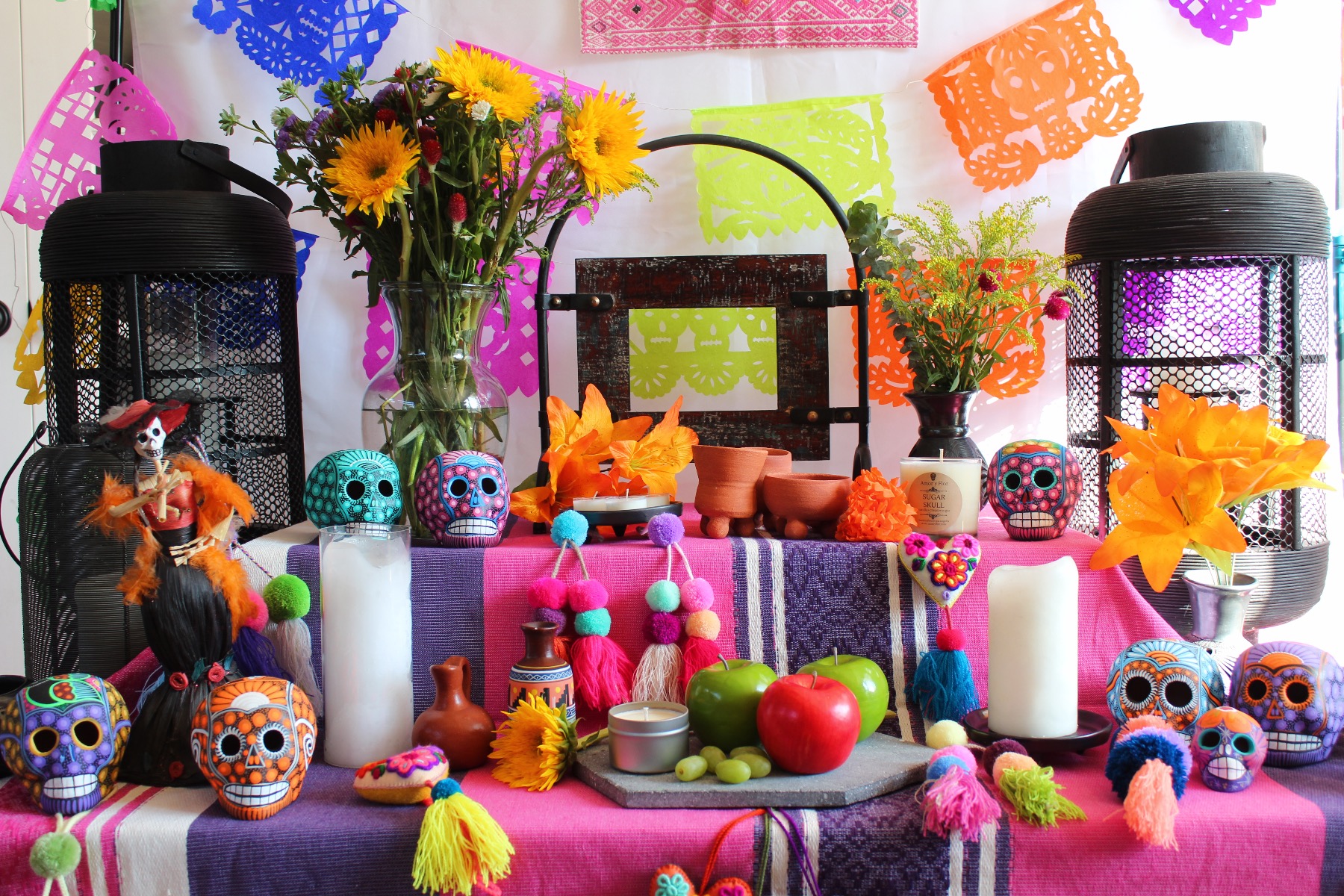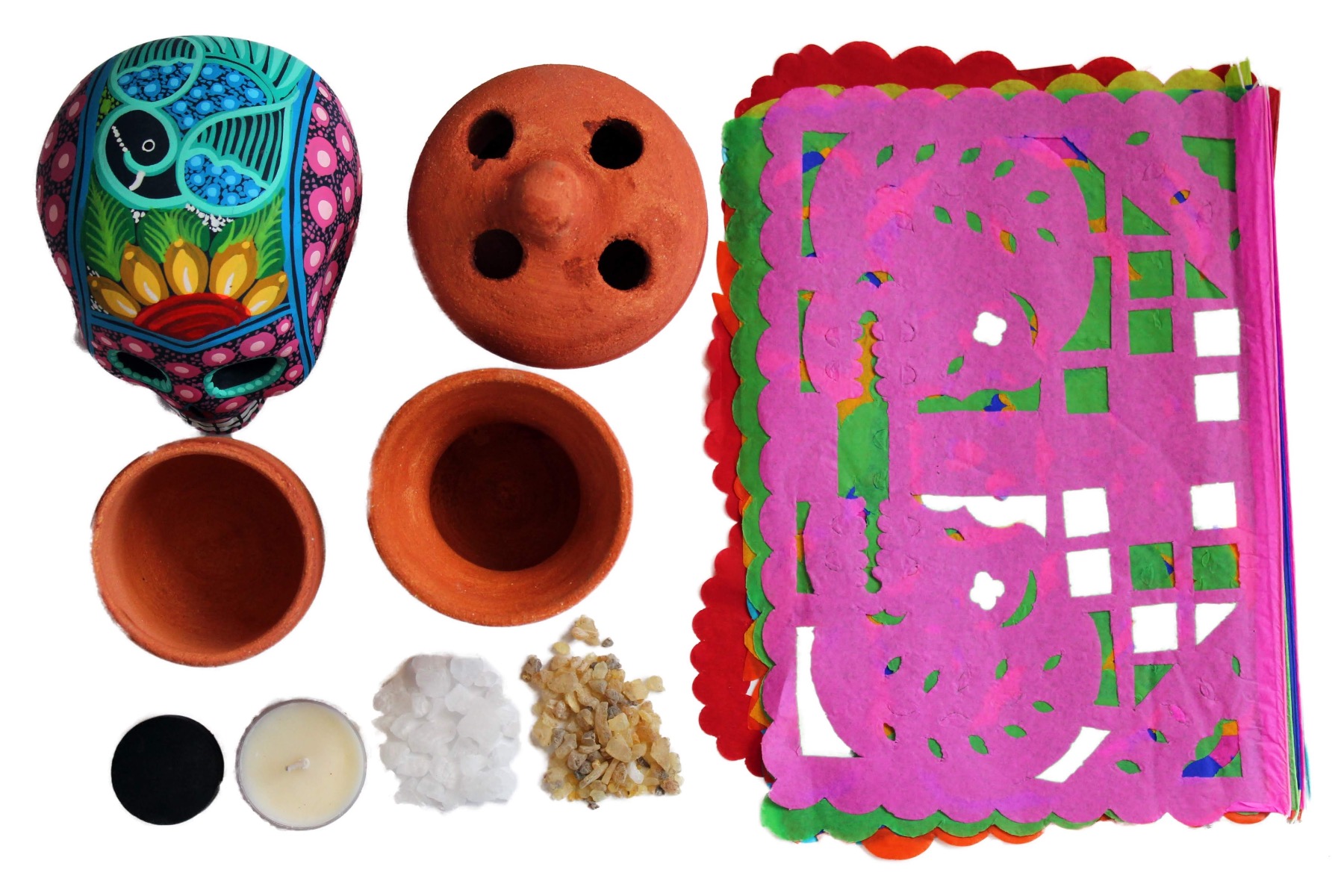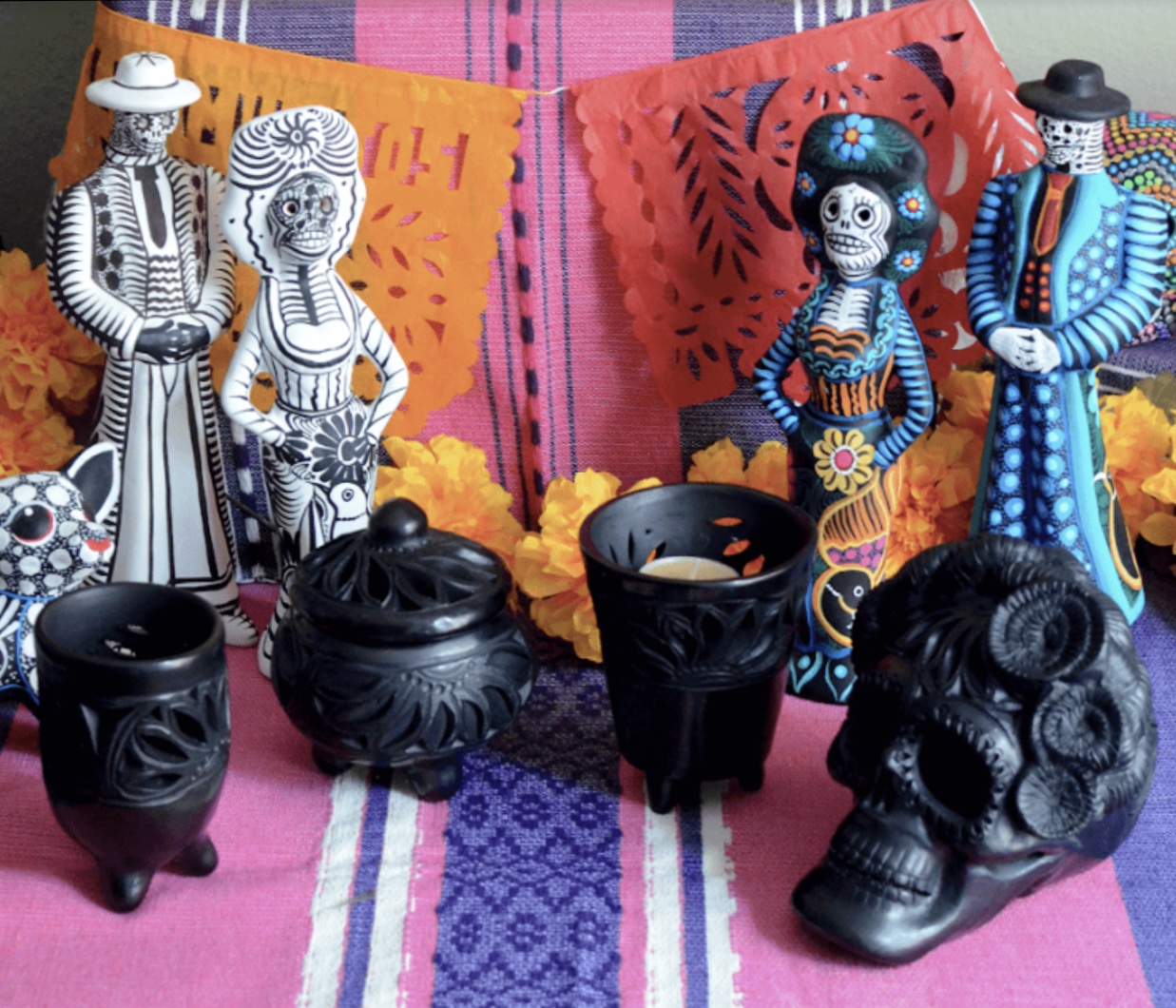MyCajita’s 2020 Día De Los Muertos Box. A custom designed 9 element altar: three hand-made Barro Negro alter pieces, copal virgin, rock salt, charcoal, papel picado, and a Barro Negro calavera skull.
Mexico’s Day of the Dead or Día de los Muertos (in Spanish), is traditionally commemorated on November 2 and today it is embraced outside of Mexico continuing to gain acceptance for its uplifting message of celebrating the lives of loved ones who have passed on. Building a Dead of the Dead ofrenda or altar can be as simple and or as elaborate as you want. In Mexico, the U.S. and in many parts of the world, families have incorporated their own traditions into building and decorating an altar and they vary greatly. Here are a few traditional constants that have been passed down for centuries to celebrate this joyful occasion.
1. The Ofrenda Levels. The standard practice is three levels: the floor, the base, and a top level. Some families incorporate religious beliefs and create altars up to seven levels with each one dedicated to a specific saint or purpose. However, the origin of this tradition predates the invasion of the Spanish and their religion, and for the indigenous people who started this tradition, the three levels represent the underworld (floor), this world (base), and the spirit world (top level).
-
- Floor (The Underworld) – since most floors of the time were dirt floors, there was a direct connection to Mother Earth and the underworld. A + was drawn on the dirt with cal (key ingredient that converts corn to masa) to indicate the four cardinal directions. Today some families use a mat with dirt and make the + with salt. In many altars the + has been transformed to a cross to reflect religious beliefs.
- Base (This World) – most use a sturdy table with enough space to hold the bulk of your ofrenda pieces. Here you may place the MyCajita altar set and your ofrenda (the favorite foods and drink of your loved ones who will visit). You can use a mantel (table cover) to make your ofrenda more colorful.
- Top Level (Spirit World) – you may use a box or smaller table to make a second level from your base. Decorate this with tissue paper or another table cover or colorful napkins. This is where the primary picture of your loved one is usually placed. Many families also include a cross and, or picture of religious significance.
2. The Elements of an Authentic Altar. There’s no way around it, Día de los Muertos is celebrated as a series of rituals and for an authentic experience these rituals and practices are important.
-
- Burning Copal – copal is an incense derived from the copal tree sap used throughout the world in ceremonies and events, even to this day it is used in churches. The belief is that the sweet sumptuous smoke wards off bad spirits and energy and invites good spirits and energy. It’s definitely the predecessor to modern day smudging with sage. Copal is supposed to be burned at sundown on the 31st of October, November 1 and 2. To burn your copal, place a piece of foil paper in the copalero and then light the self-burning charcoal and place inside. When the charcoal turns white, place pieces of copal around the edges to burn. The thick white smoke will start to fill your space, walk around with the copalero and spread it around your house to purify your space.
- Salt – salt was said to keep the souls visiting pure and intact, preventing them from being entangled with other visiting souls. Set this up with your altar and leave till you take your altar down.
- Candles – the light of candles beacons the departed and helps them to find their way home. Light as many candles as you like at sundown and let them shine throughout the night. The Velero comes with Cempasúchil (Marigold flowers) scented candles to give you both elements in one.
- Cempasúchil (Marigold) Flowers – the flower of the dead, in Oaxaca and Southern Mexico, the flower blooms around mid-October, just in time for this celebration. The sweet fragrance dances into your nostrils all throughout the pueblos and panteones (cemeteries) during this celebration. The practice in small pueblos (towns) is to light candles and leave flowers at the graves of loved ones leaving a trail of Cempasúchil petals to your doorway, to help loved ones find their way back home.
- Papel Picado – this hand stamped papel picado is used to decorate the home, as well as the altar. It is believed that when the papel picado sways back and forth, it is your loved ones arriving to celebrate with you.
- Glass of Water – we must not forget our manners and be good hosts. Loved ones will be parched after such a long journey from the spirit world. Always leave a glass of water on your Ofrenda for them.
- Food and Drink Ofrenda – the word Ofrenda means an offering. You can place your loved one’s favorite foods, drinks, snacks, and even vices for them on the table. It’s common to see large servings of Mole, Mezcal, Tequila, and cigarettes on the table for the spirit visitors to enjoy. This is where the traditional pan de muerto (bread of the dead) is displayed as an offering to loved ones.
3. Other Altar Elements. You can decorate your altar with anything you want. Most create an arch with papel picado, flowers, or a combination of the two. You may also add:
-
- Family heirlooms, playing cards, and musical instruments are often used. You can also incorporate Día de los Muertos themed items like MyCajita’s Muertos Skull, beautifully decorated and hand carved to look like a painted Catrina for Día de los Muertos, and our hand painted Calavera Skulls are a great pop of color to any (MyCajita’s Catrinas are beautiful adding bright colors and giving your ofrenda some elements of height.)
Día de los Muertos artisanal elements can be found at MyCajita.com. Discover what you need to make your celebration of the lives of your loved ones a unique experience.
What it means:
MyCajita – My Little Box
Ofrenda – offering
Cal – calcium hydroxide, also known as slaked lime or pickling lime
Masa – dough
Mantel – tablecloth
Copal – resin from the Copal tree
Copalero – copal incense burner
Cempasúchil – Marigolds
Velero – candle holder
Panteones – cemeteries
Papel Picado – cut paper
Pan de muerto – Bread of the dead)
La Catrina – Elegantly dressed skeletal figure
Calavera – Skull, representing the people who have passed, the sugar, the sweetness of life
